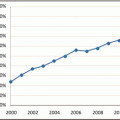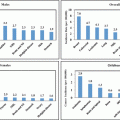© Springer International Publishing Switzerland 2016
Michael Silbermann (ed.)Cancer Care in Countries and Societies in Transition10.1007/978-3-319-22912-6_2727. Forty Years Fast Forward: Vietnamese Refugees in the United States with Comments on Their Cancer Care
(1)
Department of Laboratory Medicine and Pathology, Mayo Clinic, Hilton 8-60 E, 200 First Street SW, Rochester, MN 55905, USA
(2)
Department of Oncology, Mayo Clinic, Rochester, MN 55905, USA
Keywords
RefugeeVietnameseVietnam WarUnited StatesSouth VietnamBoat peopleCommunity partnerLanguage translationCultural sensitivityNorth VietnamThe arrival of war refugees from Vietnam into the United States took place in stages [1]. The first stage occurred at the time the Republic of (South) Vietnam fell to communism in April 1975. This stage consisted largely of Vietnamese and their families who had been involved with US military forces in Vietnam. The second stage included the “boat people ,” who left Vietnam shortly after the fall of the country and continued to depart through the late 1970s. The “boat people” consisted of people fleeing Vietnam largely because of persecution or sociopolitical and economic issues associated with living within the Socialist Republic of Vietnam; these people had relatively limited resources, struggled to exit the country, relied on mostly makeshift seafaring vessels to do so—hence, the term “boat people”—and yet eventually found refuge in the United States or in other parts of the world. This stage was followed by others who were perhaps no longer considered refugees but who had a multitude of other reasons for leaving, including the fact that they were rejoining their US military fathers (the so-called Amerasian children) or husbands. Taken together, the Vietnamese comprise the sixth largest group of Americans who were born outside the United States; the number of people who identify themselves as Vietnamese-Americans has increased nearly sixfold since 1975. In all, this group comprises two million individuals who reside in the United States.
Commenting on the US involvement in Vietnam, Martin Luther King, Jr. once said, “We have destroyed their two most cherished institutions: the family and the village. We have destroyed their land and their crops …. We have corrupted their women and children and killed their men” [2]. Other Americans—as well as some other Vietnamese—took a very different view, seeing the United States as the defender against a communist threat of a small country in Southeast Asia and as a champion for this country’s sovereignty. It was perhaps the polarizing nature of this war, as well as a strong sense of responsibility and compassion that led the US government and people to open its arms to the waves of Vietnamese described above to provide them refugee status, and then to accelerate their permanent resident status, thus affording these Vietnamese refugees the opportunity to assimilate into their newly adopted homeland and to access healthcare more readily.
The United Nations Commissioner for Refugees describes how “there are 25 such [protracted] situations in 21 countries” and that tertiary care is “still a major problem” [3]. Such circumstances underscore the need to look carefully at other refugee populations in other countries, particularly those who have settled over a span of decades, in an effort to understand what worked and what did not from the standpoint of health and dissemination of healthcare. In addition, the above historical scenario relevant to the Vietnamese raises two questions that pertain to healthcare challenges that other refugee groups might encounter. Do refugee populations manifest illnesses, for example, specific types of cancers, which are relatively less commonly seen in the more dominantly represented populations within a country? This question is important because healthcare providers’ awareness of such specific illnesses would need to increase, and screening efforts specific to the refugee population might need to intensify. Second, are refugee populations able to access healthcare and comfortable with accessing healthcare? Assessing whether trust exists within the refugee community is of paramount importance. In the absence of such trust, healthcare efforts would never be able to be successful.
An Educational and Economic Characterization of the Vietnamese in America
First, as one looks back over the nearly 40 years since their arrival in the United States, how has this group of refugees from Vietnam fared? Despite the often taxing and disheartening circumstances surrounding the Vietnamese diaspora in the United States, Vietnamese Americans appear to have added to the “melting pot” of American culture. Admittedly, members of this community have encountered violent, discriminatory acts both from within and externally, including direct assaults from Ku Klux Klan members in the southern United States [4]. Nonetheless, this point of adding to the “melting pot” is important because, in general, not all refugees are able to settle in a country with the financial resources and acceptance of diversity to enable a refugee population to assimilate and yet maintain its cultural identity. Evidence of this acceptance includes the fact that several Vietnamese refugees or their children have achieved prominence within the news media, business, and government: the US Patriot Act was drafted by Viet D. Dinh, a Vietnamese American, who served as Assistant Attorney General of the United States, and Jacqueline Nguyen is the first Asian American woman to serve on the US federal appellate court, as appointed by President Obama [5]. In general, although rooted as a refugee population in the United States, Vietnamese Americans do not appear to lag markedly behind from an educational standpoint, as evidenced by the fact that 23 % of Vietnamese immigrants age 25 or older have a college degree compared to 29 % in the US born population.
Vietnamese Americans Have Higher Rates of Hepatocellular Cancer, Lung Cancer, and Cervical Cancer Compared to the General US Population
And yet despite such social and economic assimilation, certain healthcare issues remain somewhat unique to this population of Vietnamese Americans. Some Vietnamese Americans were exposed to Agent Orange, a defoliant, which the US military sprayed over agricultural land in Vietnam in an effort to engage in herbicidal warfare [1]. Dioxin was included in the sprayed defoliant. Appearing orange in color and thereby acquiring its moniker, Agent Orange was manufactured by the US Department of Defense in collaboration with a few large US industrial companies. Although the apparent original intentions of herbal warfare were to spare direct bloodshed, individuals who had been exposed to this chemical have higher rates of specific cancers as well as other health problems. Such cancers were observed both among Vietnamese and American servicemen and are widespread in nature, including soft tissue sarcomas, lymphomas, Hodgkin lymphoma, and chronic lymphocytic leukemia/small lymphocytic lymphoma [6].
For reasons that are less clear, Vietnamese Americans are also at a higher risk for chronic hepatitis B and C , which in turn increases their risk for hepatocellular carcinoma. Indeed, the majority of people coming from the western Pacific and Southeast Asia regions—close to 100 million individuals—carry this risk factor, leading to endemic rates of this malignancy in that part of the world and, now, relatively higher rates in the United States as a result of the Vietnamese diaspora [7, 8]. This influx of Vietnamese Americans into the United States has also led to a greater awareness of this malignancy among individuals within this ethnic group. In a recent review on this topic, Nguyen and Nguyen described how many Southeast Asian patients carry few of the risk factors for hepatitis C and for hepatocellular carcinoma as typically recognized within other patient populations by healthcare workers in the United States, and as a result may be underdiagnosed for this virus-related malignancy that could potentially be cured if diagnosed and resected early. These investigators also make the point that, although Southeast Asian patients at risk for hepatitis C tend to be older, they also appear to respond better to antiviral therapy for hepatitis C than other patients. Thus, these investigators go so far as to advocate in favor of screening for hepatitis C among Asian patients with known high rates of hepatitis C, including Vietnamese Americans, regardless of their risk factors. Along similar lines, a greater awareness of hepatitis B infection is perhaps also indicated.
Furthermore, this ethnic group suffers high rates of lung cancer—35 % higher when compared to Asian Americans born in the United States. Although war exposures may in part account for this higher rate of lung cancer , smoking likely also plays a role [8, 9]. McPhee and Nguyen report that 33–56 % of Vietnamese men living in the United States smoke, with much lower self-reported rates among women [8]. Of relevance, Vietnamese Americans who develop lung cancer also suffer poorer overall and disease-specific survival compared to Chinese Americans [9]. These findings underscore the need to increase awareness of lung cancer among Vietnamese Americans to facilitate early detection, and thus to provide these individuals with therapeutic options in a timely manner.
Stay updated, free articles. Join our Telegram channel

Full access? Get Clinical Tree





